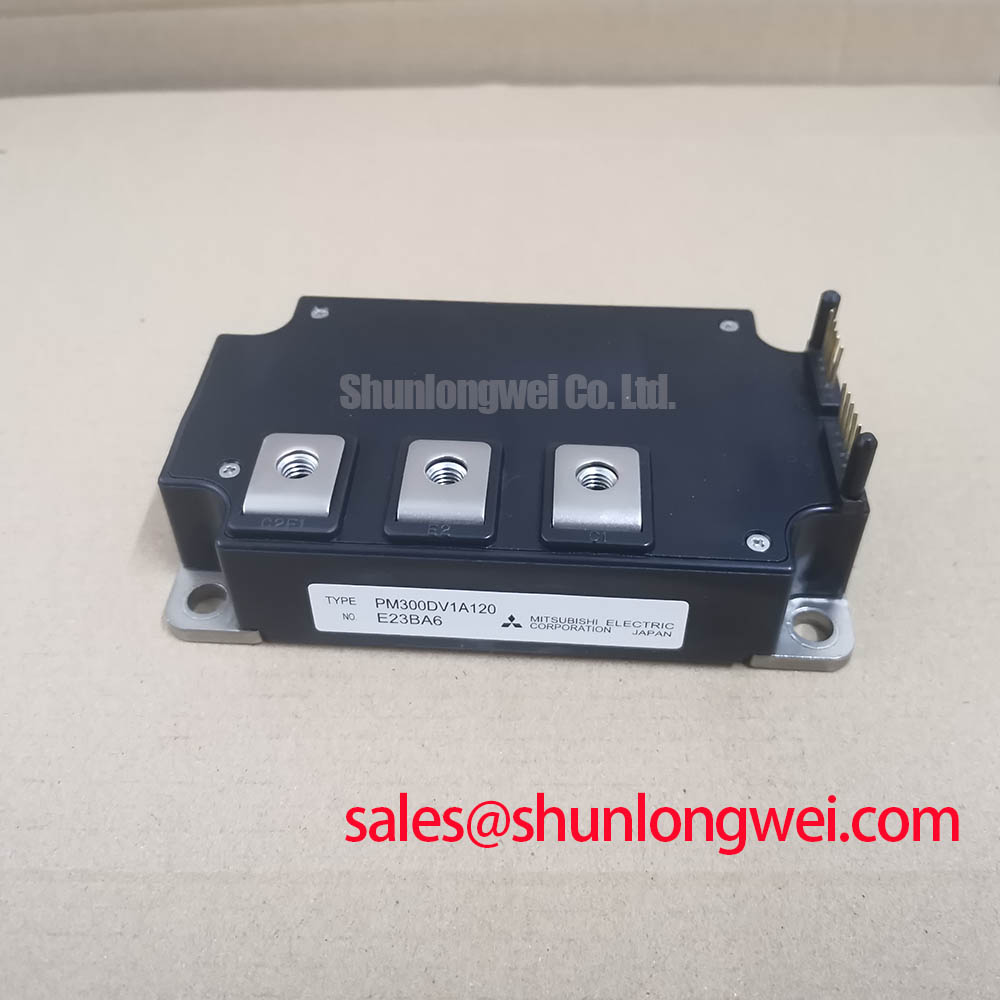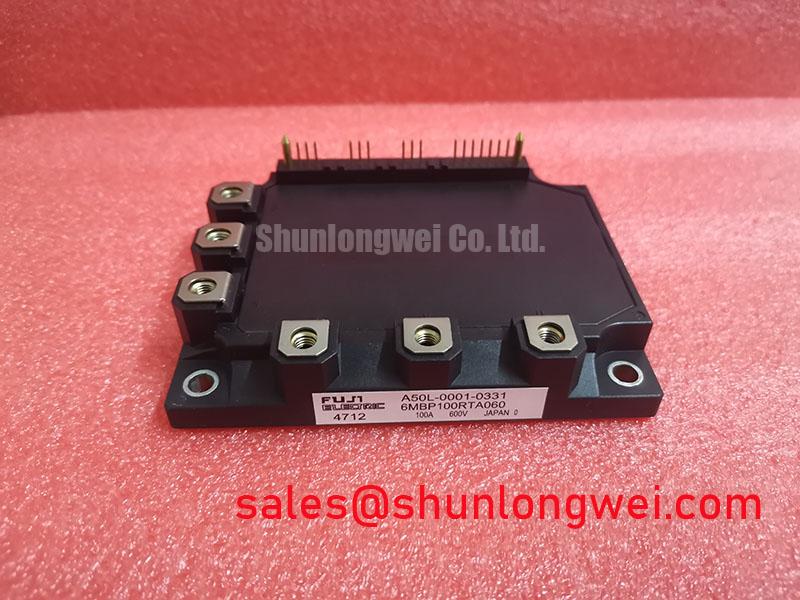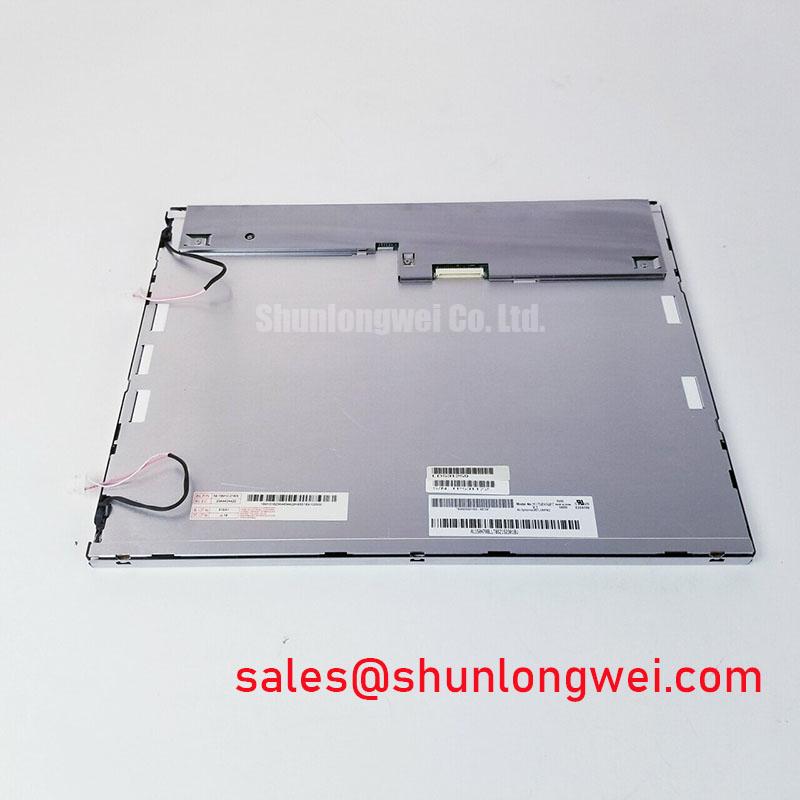PM300DV1A120: Mitsubishi 1200V / 300A V1 Series Intelligent Power Module
Content last revised on October 8, 2025.
The Mitsubishi PM300DV1A120 is an advanced Intelligent Power Module (IPM) designed for high-reliability motor control applications, delivering robust performance through integrated protection and advanced chip technology. This module integrates crucial drive and protection circuits, simplifying system design and enhancing operational safety. Key specifications include: 1200V Collector-Emitter Voltage | 300A Collector Current | 2500Vrms Isolation Voltage. The primary benefits are simplified gate drive design and comprehensive, real-time fault detection. For engineers designing high-power servo drives, this IPM directly addresses the challenge of ensuring system survivability under fault conditions like short circuits or over-temperature events. With its integrated protection and direct chip temperature monitoring, the PM300DV1A120 is engineered for resilience in demanding industrial automation environments.
Key Parameter Overview
Decoding Specifications for System Reliability and Performance
The technical specifications of the PM300DV1A120 are foundational to its performance in high-power conversion systems. Understanding these parameters is key to leveraging the module's full capabilities for robust and efficient design.
| Parameter | Value | Engineering Significance |
|---|---|---|
| Collector-Emitter Voltage (VCES) | 1200 V | Provides a substantial safety margin for applications running on 400V to 575V AC lines, protecting against voltage spikes common in industrial environments. |
| Collector Current (IC) at Tc=25°C | 300 A | Enables control of motors typically in the 15 kW to 37 kW range, depending on the specific application and cooling strategy. |
| Collector Current Pulse (ICRM) | 600 A | This high peak current capability is critical for handling transient conditions such as motor startup inrush current without device degradation. |
| Isolation Voltage (Visol) | 2500 Vrms (AC, 1 min) | Ensures robust electrical isolation between the high-power circuits and the control logic/heatsink, which is vital for system safety and meeting regulatory standards. |
| Integrated Protections | Short-Circuit (SC), Over-Temperature (OT), Under-Voltage (UV) | Acts as an onboard safety system. The direct chip temperature sensing for OT protection provides a faster and more accurate response than case-mounted sensors, preventing catastrophic failure. Think of it as having a dedicated thermal monitor for each individual power switch. |
Download the PM300DV1A120 datasheet for detailed specifications and performance curves.
Application Scenarios & Value
Enhancing Reliability in Servo Drives and General-Purpose Inverters
The PM300DV1A120 is engineered to enhance the reliability and simplify the design of high-performance motor control systems. Its primary value lies in its high level of integration, which combines power switching with critical protection and control functions into a single, optimized package.
A key engineering challenge in Servo Drive design is managing fault conditions without compromising the power stage. The PM300DV1A120 directly addresses this with its integrated short-circuit and over-temperature protection. The over-temperature function, which monitors the actual chip temperature, provides a significantly faster and more accurate response compared to external NTC-based sensing on the module's baseplate. This allows the system to react to a thermal event before it leads to device failure, crucial for applications in robotics and CNC machining where uptime and precision are paramount. The module's ability to issue a fault signal allows the system controller to take immediate corrective action, improving the overall robustness of the servo drive.
In general-purpose inverters and other motor controls, the module's 300A continuous current rating and 1200V blocking voltage make it suitable for a wide range of industrial machinery. The built-in under-voltage lockout prevents erratic switching behavior during power-up or brownout conditions, ensuring predictable and safe motor operation. For systems requiring a lower current rating, the related PM150CVA120-2 offers a similar feature set with a 150A capability.
Frequently Asked Questions (FAQ)
What is the primary benefit of the integrated over-temperature (OT) protection in the PM300DV1A120?
The key benefit is its accuracy and speed. By directly sensing the temperature of the CSTBT™ (Carrier Stored Trench Bipolar Transistor) chip surface, it provides a real-time thermal status that is far more responsive than traditional methods using an NTC thermistor on the module's baseplate. This allows for faster shutdown during a thermal overload, preventing catastrophic IGBT failure and improving overall system reliability.
How does the Under-Voltage (UV) lockout function contribute to system safety?
The UV lockout ensures that the IPM's gate drive and control logic have sufficient supply voltage to operate correctly. It prevents the IGBTs from turning on or operating in a partially-on state when the control voltage is too low, which could otherwise lead to high conduction losses, overheating, and potential device damage. It guarantees predictable behavior during power-up and power-down sequences.
Can the fault output (Fo) terminal distinguish between different types of faults?
No, the PM300DV1A120 provides a single fault output signal. This signal is triggered when any of the internal protection functions—Short-Circuit (SC), Over-Temperature (OT), or Under-Voltage (UV)—are activated in either the upper or lower arm of the inverter. The system's microcontroller must then initiate a broader diagnostic routine if it needs to identify the specific nature of the fault.
What does it mean that the PM300DV1A120 is part of the "V1 Series" and is compatible with the V-series package?
This indicates that the module belongs to a specific generation of Mitsubishi's Intelligent Power Modules and shares a common physical footprint and terminal layout with other V-series modules. This package compatibility is a significant advantage for engineers, as it allows for scalability in power ratings across a product line without requiring a complete redesign of the PCB layout or mechanical assembly.
What is the role of the 5th generation Full-Gate CSTBT™ chip technology?
The 5th generation CSTBT™ is an advanced IGBT chip structure developed by Mitsubishi. Its "Full-Gate" design helps to lower the collector-emitter saturation voltage (VCE(sat)), which directly reduces conduction losses. Lower losses mean less heat is generated during operation, leading to higher system efficiency and potentially smaller heatsink requirements. This technology is central to achieving the module's balance of high power density and thermal performance.
An Engineer's Perspective on Implementation
From a design engineer's viewpoint, the PM300DV1A120's true value is the reduction of design complexity and risk. Integrating the gate drive and a suite of robust protection features into one package eliminates the need for numerous external components and the intricate design work associated with them. This not only shrinks the PCB footprint but, more importantly, it outsources the critical tasks of gate signal optimization and fault management to a pre-validated component. This allows the design team to focus resources on higher-level system logic and application-specific features, accelerating the development cycle and increasing the final product's reliability.


















